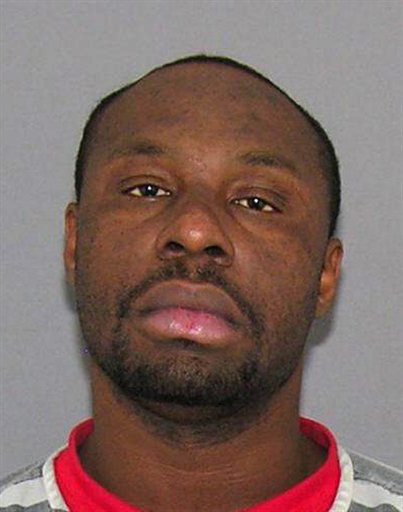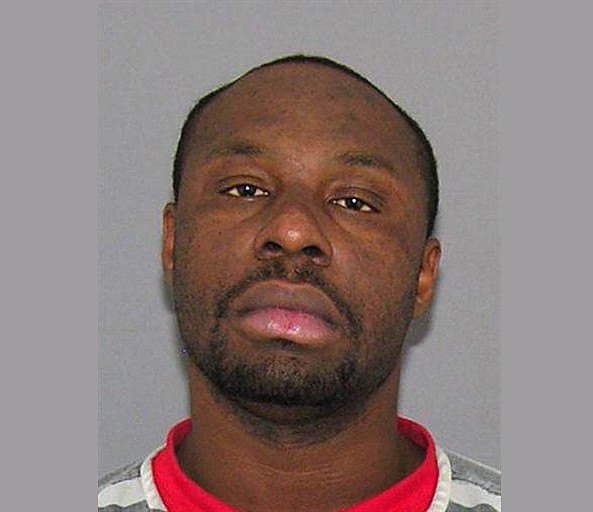 Ricardo Woods, shown in this undated photo provided by the Hamilton County Sheriff's Deptartment, is charged with murdering David Chandler, who identified Woods by blinking to authorities while he was being interviewed while paralyzed after being shot in the head and neck. Chandler died about two weeks later. Woods is set to go on trial Monday.
Ricardo Woods, shown in this undated photo provided by the Hamilton County Sheriff's Deptartment, is charged with murdering David Chandler, who identified Woods by blinking to authorities while he was being interviewed while paralyzed after being shot in the head and neck. Chandler died about two weeks later. Woods is set to go on trial Monday.CINCINNATI - The national Innocence Project is backing a murder suspect's efforts to exclude from his trial a videotape of a dying man's eye blinks, which prosecutors say identify him as the gunman.
Ricardo Woods is scheduled to go on trial Monday in Hamilton County Common Pleas Court in the fatal shooting of David Chandler. Chandler, 35, was shot in the head and neck as he was sitting in his car in Cincinnati on Oct. 28, 2010. He was paralyzed from his injuries and could only communicate with his eyes when police interviewed him a few days after the shooting.
Chandler was hooked up to a ventilator in the hospital when police questioned him about the person who shot him. They showed him Woods' photo and instructed him to blink three times for yes and twice for no as they videotaped his responses. Chandler didn't respond with blinks to every question in the 17-minute video and sometimes blinked one time, but triple blinks came in response to repeated questions asking if he knew the shooter and whether the person in the photo was the culprit. Chandler died 10 days after the interview.
Prosecutors say Chandler clearly identified Woods as the shooter, and Judge Beth Myers found that the blinks were reliable and were made by pronounced eye movements and not by involuntary blinking. She ruled in 2011 that jurors will be allowed to see the videotape. But the defense insists the identification wasn't reliable and has asked the judge to reconsider.
The Innocence Project, a criminal justice organization which has succeeded in freeing wrongfully convicted prisoners through DNA evidence and also works to prevent wrongful convictions, last week filed a motion supporting the defense request. The motion asks the court to consider evidence not previously presented, including scientific research on eyewitness identification.
Among other factors, the motion says that the use of one photo rather than a photographic lineup was "unduly suggestive." Also, the two people in the car with Chandler that night did not identify Woods as the shooter when shown photographic lineups, according to the motion.
Prosecutors are still reviewing the recently filed motion, but "we are ready for trial on Monday," said spokeswoman Julie Wilson.
Woods' attorney, Kory Jackson, also maintains that Chandler's condition and drugs used to treat him could have affected his ability to understand and respond.
A neurologist with University Hospitals Case Medical Center in Cleveland says while he can't comment specifically on the Cincinnati case, instances of people being able to communicate with their eyes after sustaining brain injuries that leave other parts of their bodies paralyzed are not uncommon.
Dr. Michael Devereaux said communication has been possible with patients suffering an injury to the brain stem that prevents most communication with the body.
"Patients can be wide awake, alert and responsive through things such as eye-blink communication," even though the brain itself is disconnected from being able to control most of the body's other systems, he said.
But Jackson says he will present testimony from medical experts questioning the reliability factor.
"All the experts that we have would say that they wouldn't have relied on Mr. Chandler to make a will, to do anything that would be legally binding," Jackson said.
Prosecutors have declined to comment on a motive, although authorities have suggested the men knew each other through drug deals.
Woods, 34, could be sentenced to life in prison if convicted.
